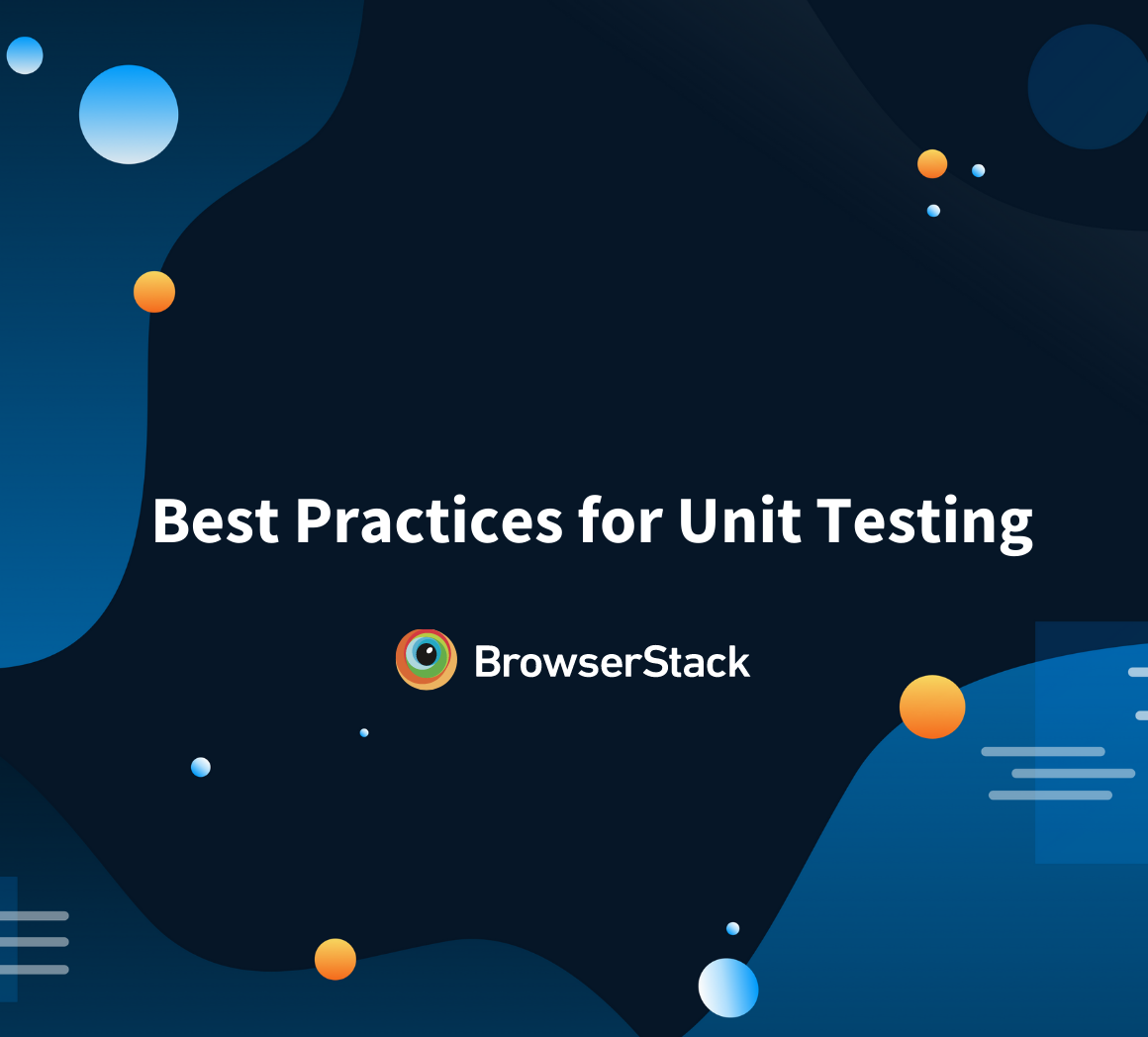Top Unit Testing Frameworks in 2023
By Shreya Bose, Community Contributor - September 25, 2023
Unit testing is essential, as is picking the right framework for the job. Like any tool in your development kit, choosing the right unit testing framework is more than looking through catalogs and sitting through product demos. Devs responsible for unit tests should take free trials of each tool under consideration and pursue detailed, question-laden conversations with product representatives to get transparent insights.
Of course, if you’re going for open-source options, you’ll know what you’re getting, thanks to the active developer communities that support and innovate upon most major non-paid frameworks. Either way, this article aims to help get you started by listing the big players in the arena and introducing the highlights of each.
Given the number of options, we thought we’d discuss some of the best contenders in the field – the top unit test frameworks you should consider to refine your development efforts.
Note: This article assumes you’re already up to date on “What is a Unit Testing Framework?” which is why it will jump straight into the tools.
Popular Unit Testing Frameworks
1. JUnit

You set up your test data and then build software code around it. JUnit users like to call this approach “test a little, code a little, test a little, code a little”. This technique has been proven to amp up productivity and software stability because all code is intrinsically designed to pass necessary tests. Consequently, devs must spend less time debugging the app post-release because not too many bigs appear in already tested code.
Read More: How to write JUnit test cases
Advantages
- Can be used for both integration and unit tests.
- Exceptionally effective in enabling TDD or Test Driven Development.
- Allows development of anomaly-free and easily readable code.
- Supported by most major IDEs – Eclipse, NetBeans, Maven, Ant, and IntelliJIDEA.
- Compatible with Java 8, but also allows execution of test cases written in earlier JUnit versions.
Limitations
You cannot use JUnit to run dependency tests.
2. JBehave

Advantages
- Since it supports BDD, JBehave tests prioritize product intuitiveness and reasoning. This leads to the assembly of products with superior features and UI aspects.
- Enables integration between multiple dev teams working with similar requirements in different projects.
- You can run JBehave in the same format as your product specs – created by stakeholders and project managers. That means all stakeholders can now get more transparent access to the activities of dev and QA teams.
Limitations
Any BDD testing framework requires seamless and frequent communication between team members using the tool. Getting all members onboard poses a management challenge, especially when a team is entirely new to the BDD approach.
Also Read: Unit Testing Frameworks in Selenium
3. NUnit

NUnit 3.0 has been released under the MIT license. It is known for being user-friendly; testers can use it after going through a short and gentle learning curve.
Advantages
- NUnit works flawlessly with multiple build platforms and custom test runners.
- Is known for speedy test running and sophisticated annotations to specify multiple inputs for a test easily.
Limitations
There are reports of NUnit integrating inadequately with Visual Studio. Users have had to put in extra effort and install a few tools to get it to work.
4. XUnit

xUnit doesn’t require installation and is often used with ReSharper, Xamarin, TestDriven.Net, and a Console runner that lets you run unit tests.
xUnit is particularly favored because it allows wide extensibility of test classes and test methods.
Advantages
- It is more flexible and extensible than the other .Net Unit test frameworks. It allows you to create new attributes to control tests.
- Unlike other .Net Unit testing frameworks, xUnit test methods are isolated.
- xUnit requires a reduced number of custom attributes.
- Lightweight, easy to use, and supported by an active developer community.
Limitations
- Some developers and industry leaders have claimed that xUnit test reports provide insufficient information, such as what kind of test failed and at what juncture in the execution
Read More: NUnit Vs XUnit Vs MSTest: Core Differences
5. Robot

Robot can also run scripts in Java and .Net, and supports testing on multiple platforms – Windows, MacOS, and Linux.
You can develop and run unit tests independent of language & middleware. Build test cases as plug-ins (scripts in Python, Ruby, Lua, or built as DLLs with C++). Robot doesn’t depend on external libraries since it has a test runner to execute tests made as plug-ins.
Also Read: Robot Framework and Selenium Test Automation
Advantages
- Quite easy to install and use, even for individuals with no technical expertise.
- It supports many test libraries and is easily extensible with custom libraries. Easy to integrate with other tools and systems.
- Integrates flawlessly with essential development and testing systems – Selenium, Appium, Jenkins, etc.
- Provides detailed test reports that make it easy to identify the location and cause of failure.
- Supports data-driven and parallel testing.
- Is supported by a large community of devs and testers.
Limitations
- If you want to extend the Robot framework with custom libraries or test libraries, you’ll have to go through a steep learning curve.
- You get limited support for database testing.
- Robot’s keyword-driven testing approach may not work well for tests requiring a high level of customization. Debugging for such tests is especially complex.
- You get limited community support for certain Robot libraries.
6. PyUnit (Unittest)

This Python unit test framework enables test automation, sharing setup and shutdown code for tests, collating tests into collections, and keeping tests independent of the reporting hierarchy. The Unittest module also lets you create “classes”, which become an easy and efficient way to empower tests with the aforementioned features.
Advantages
- Comes out of the box with the Python package.
- No additional modules are required to run PyUnit, since it is part of the standard Python library.
- Provides flexible and uncomplicated test execution.
- Generates quick but detailed reports in XML as well as unittest-sml-reporting.
Limitations
- It requires a rather intimidating amount of boilerplate code to work.
- Since PyUnit is based on JUnit, it uses the latter’s camelCase naming method rather than Python’s snake_case naming convention.
Read More: Top 8 Python Testing Frameworks in 2023
7. Cypress
Cypress web testing framework allows the tester to carry out two essential testing flows: End-to-End testing and Component testing. A complete test result is usually comprised of the E2E and Component tests. Cypress is a single-package test framework comprising Time Travel debugging, Asynchronous testing, and live code reloading.
Usually, to achieve all these benefits, the tester will have to use 2-3 different tech stacks, so Cypress enables the tester to get all these options while using it. Hence, using Cypress unit testing is much more convenient.
Advantages
- Quick, easy setup and execution of tests.
- Writing time for tests is lower compared to other frameworks.
- It can be integrated with any CI tool equipped for headless execution with command-line options.
- It captures screenshots of test execution automatically in case of test failure for effective debugging.
- Automatically reloads Test Runner once the changes have been made to the test.
Limitations
- Using async/await in your Cypress test, the test might behave unexpectedly.
- Parallel Testing setup is complicated in Cypress and not straightforward.
- It doesn’t support multiple tabs and windows, but Cypress has mentioned this as the tradeoff.
How to choose the right Unit Testing Framework?
Start by asking yourself the following questions:
1. What do you need to test?
What kind of software do you need to test? What testing requirements are recommended by your team, especially the QA team? What is the scope of testing? What kind of test coverage are you aiming for?
2. Which software areas need to be tested?
Which software features need to be tested first? Your chosen framework should let you start with the high-priority modules in the shortest possible time. The longer the delay, the greater the time to market.
3. Who owns the framework?
Who is the point person ultimately responsible for managing and maintaining the framework? The tool should be aligned with the skills and competencies of this person since they’ll be accountable for unraveling any glitches or technical gridlocks devs might face while using it.
Do all developers have the skills required to operate the chosen framework?
It doesn’t matter if a framework is perfect for running unit tests in Java if your team doesn’t use Java. Be clear on the capabilities of your team before making a choice.
Read More: Best Practices for Unit Testing



